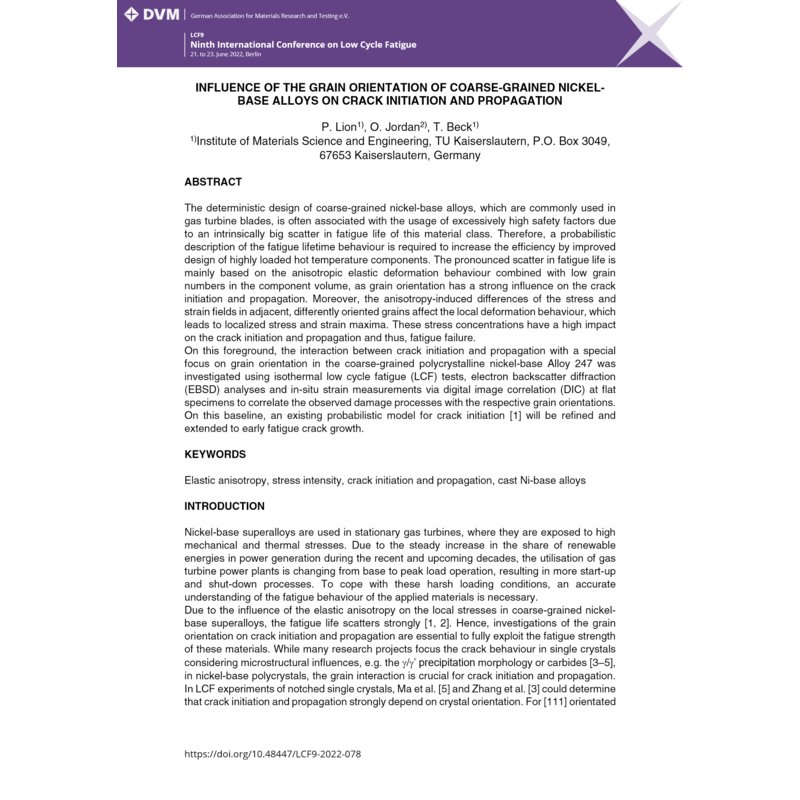- Online only



The pronounced scatter in fatigue life of nickel-base superalloys is mainly based on the anisotropic elastic deformation behavior of nickel-base alloys combined with low grain numbers in the specimen volume, because grain orientation has a strong influence on the crack initiation and propagation. In previous investigations, the resulting shear stress was calculated by an extended Schmid’s law depending on Young’s modulus and Schmid factor for a given total strain amplitude [1]. However, considering the grain structure on a larger scale, anisotropy induced differences of the stress / strain fields in adjacent, differently oriented grains influence the local deformation behavior, which leads to localized stress and strain maxima. Crack initiation and propagation followed by fatigue…

Datenschutzbedingungen (bearbeiten im Modul "Kundenvorteile")

Lieferbedingungen (bearbeiten im Modul "Kundenvorteile")

Rücksendebedingungen (bearbeiten im Modul "Kundenvorteile")
The pronounced scatter in fatigue life of nickel-base superalloys is mainly based on the anisotropic elastic deformation behavior of nickel-base alloys combined with low grain numbers in the specimen volume, because grain orientation has a strong influence on the crack initiation and propagation. In previous investigations, the resulting shear stress was calculated by an extended Schmid’s law depending on Young’s modulus and Schmid factor for a given total strain amplitude [1]. However, considering the grain structure on a larger scale, anisotropy induced differences of the stress / strain fields in adjacent, differently oriented grains influence the local deformation behavior, which leads to localized stress and strain maxima. Crack initiation and propagation followed by fatigue failure is strongly influenced by these stress peaks. Therefore, the local stress and strain fields near the initiation site as well as at the tip of a propagating crack need to be determined experimentally and the effect of the local grains in the crack region on progressive material damage was investigated.
On this foreground, in the study presented here, the interaction between crack initiation and propagation with special focus on influence of grain orientation in coarse-grained polycrystalline nickel-based superalloys was investigated by isothermal low cycle fatigue tests, EBSD analyses and in-situ strain measurement. For this, a uniaxial loading stage integrated in a scanning electron microscope was used to identify the stress and strain maxima and to analyse crack propagation in flat specimens and to correlate the observed damage processes with the grain orientation maps generated via EBSD. Since the thickness of the flat samples was sufficiently low to assure a “quasi 2-dimensional” grain structure in the gauge section, the occurring stress and strain fields were calculated via 2-D finite element analyses based on the grain structures obtained by EBSD, considering the grain orientation as well as the elastic anisotropy of the individual grains. On this baseline, an existing probabilistic model for crack initiation [1] will be refined and extended to initial fatigue crack growth.
| [1] | B. Engel, L. Mäde, P. Lion, N. Moch, H. Gottschalk und T. Beck, „Probabilistic Modeling of Slip System-Based Shear Stresses and Fatigue Behavior of Coarse-Grained Ni-Base Superalloy Considering Local Grain Anisotropy and Grain orientation,“ Metals, Bd. 9, Nr. 8, 24 07 2019. |